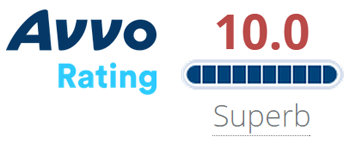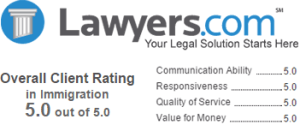Newsletter US Immigration Update September 2003
Volume Eight, Number Nine

Published by the Law Offices of Carl Shusterman, 600 Wilshire Blvd, Suite 1550, Los Angeles, California, 90017. Phone: (213) 623-4592 x0.
Subscribe to our E-Mail Newsletter, join the conversation on our Immigration Facebook Page, follow our Blog Posts and subscribe to our “How-To” Immigration Videos.
Client Reviews

Highly Competent Legal Services
“I work with Merritt Hawkins, the largest physician search firm in the United States. For over 20 years, we have partnered with The Law Offices of Carl Shusterman, which assists us in obtaining visas for the many international physicians we recruit. Mr. Shusterman and his staff have been an indispensable resource of expertise, allowing us to recruit international doctors in the most efficient manner possible on behalf of our clients.”
- Phil Miller, Merritt Hawkins, Dallas, Texas
Read More Reviews
Zoom Consultations Available!
Newsletter US Immigration Update September 2003
This month’s issue contains the following topics:
- October 2003 State Department Visa Bulletin
- Immigration Government Processing Times
- H-1B Cap Set to Sink Back to 65,000 Starting in October
- DV-2005 Green Card Lottery: You Must File Online
- Immigration Trivia Quiz: The Write Stuff
- WebCasts: Watch Immigration Legislative Hearings Online
- 180-Day Portability Rule: The New BCIS Memorandum
- Schedule of Upcoming Immigration Law Seminars
- Chat Schedule, Transcripts, Audios & Videos
- Answers to the August 2003 Immigration Trivia Quiz
NEWS FLASHES:
- The American Organization of Nurse Executives (AONE) will be hosting a workshop, Foreign Nurse Recruitment: Getting it Right! on November 6-7, 2003 at the Loews Hotel in Philadelphia, PA. This workshop will focus on the process of recruiting, hiring, orienting and retaining foreign educated nurses. The workshop will begin with a reception on Thursday evening, November 6th, which will feature exhibitors from international recruitment and immigration law firms. On November 7th, attendees will hear from Barbara Nichols, CEO of the Council on Graduates of Foreign Nursing Schools (CGFNS); Carl Hampe and Carl Shusterman, immigration lawyers; Debi Gamble, John Gatto, and Phillip Slaton representing international recruitment firms; and AONE Board members Rita Turley and Linda Daum. Other speakers include Dr. Nancy Chornick, National Council of State Boards of Nursing (NCSBN); Leonard J. Hausman, American HigherEd, Inc.; Dr. Kathleen Scoble, The Institute for Nursing Healthcare Leadership; and Catherine Walsh, Mercy Hospital and Medical Center, Chicago, Illinois.
Early registration deadline for this meeting is October 15, 2003.
If you are interested in exhibiting or sponsorship opportunities, or if you have questions, please contact AONE at 202/626.2250 or
aone@aha.org
- Career Opportunities at the Law Offices of Carl Shusterman: We are expanding again! Do you have a passion for immigration law? Do you have excellent writing skills? Are you results oriented? Whether you are an experienced immigration business paralegal or are just out of college, if you have the right stuff, we are prepared to make you an offer that you can’t refuse! For more information, see our “Career Opportunities” page at
https://www.shusterman.com/careers.html (Link no longer operational)
- Asylees– AILF’s Immigration Policy Center has published a new report entitled “Lives in Limbo: Mismanagement of a Bad Policy Leaves Asylees in No Man’s Land”. The introduction to the report states as follows: “Victims of persecution who make it to the United States and are granted asylum from their persecutors must wait 12 years to become lawful permanent residents and 16 years to become U.S. citizens because of arbitrary numerical caps and federal mismanagement. This state of affairs not only is inhumane, but undermines the original intent of Congress to help those who have escaped persecution to integrate quickly into U.S. society.” We link to the report from our “Asylum” page at
- B-Gone! – The government has decided to drop the “B’s” in the three bureaus which used to be known as the INS and the Customs Service: BCIS, BICE and BCBP. The new bureaus will simply be known at Citizenship and Immigration Services (CIS), Immigration and Customs Enforcement (ICE) and Customs and Border Protection (CBP).
- CIS Customer Service Number– Earlier this summer, the CIS announced that inquiries about cases pending at its service centers could no longer be made directly to the centers themselves. Rather, all inquiries would have to be made through the CIS’s National Customer Service Center (NCSC). In late August, the American Immigration Lawyers Association (AILA) released the results of a nationwide survey of immigration law firms. The 25-page survey reveals that 79% of those participating in the survey are dissatisfied with the system. We have posted the AILA survey online at
https://www.shusterman.com/pdf/aila-ncsc803.pdf (Link is no longer operational.)
- California– Office of Immigrant Assistance – If you reside in California, and are a victim of an unlawful immigration consultant, you can help put these scam artists out of business by filing a complaint with the Office of Immigrant Assistance, a division of the State Department of Justice which was established in 2001. During the past two years, the Office has filed charges against 14 unlawful immigration businesses. Though everyone knows that this is just the tip of the iceberg, the problem is that few potential immigrants even know about the Office.Call the Office with your complaint at their toll-free number at (888)-587- 0557. The Office does not care whether you are legal or illegal. Its job is to crack down on phony “immigration experts” and con artists who are preying upon newcomers to the U.S. and taking their money in fraudulent schemes.
- California Drivers Licenses– California has enacted a new law (effective on January 1, 2004) which will allow persons without social security numbers to take the test to obtain drivers licenses. Possession of an Individual Taxpayers Identification Number (ITIN) issued by the Internal Revenue Service will be sufficient to apply to be tested for a driver’s license. Bottom line: undocumented immigrants will again be allowed to apply. This new law effectively repeals the 1995 law which imposed the social security number requirement.On September 5, California Governor Gray Davis signed the bill into law and stated “Right now, let’s not kid ourselves: People are driving to work. They’re driving without demonstrating they know the rules of the road. They’re driving without insurance. Everyone benefits by having drivers on the road know the rules of the road and presumably be a safer driver.”We link to the Governor’s press release at
http://www.governor.ca.gov/state/govsite/gov_htmldisplay.jsp? BV_SessionID=@@@@0415515780.1063558612@@@@&BV_EngineID=
gadcifedllggbemgcfkmchcog.0& sCatTitle=Press+Release&sFilePath=/govsite/press_release/2003_ 09/20030905_L03097_SB60.html& Title=GOVERNOR+DAVIS+RESTORES+DRIVER’S+
LICENSES+TO +CALIFORNIA+IMMIGRANTS+09%2f05%2f2003& iOID=52221 (link no longer operational)Republicans in the State Legislature were quick to respond. In a letter written by Assemblyman Russ Bogh, R-Yucaipa, and signed by 37 other Republican lawmakers, the group asked U.S. Attorney General John Ashcroft to “invalidate the California driver’s license as a reliable and acceptable form of identification and documentation — particularly at our nation’s airports — until we can repeal” the law.
Stay tuned!
- Employers– The BCIS’s Office of Business Liaison has recently issued a number of reports for employers:
- Temporary Religious Workers (R-1)
- Aliens with Extraordinary Ability (O-1) and Accompanying/Assisting Aliens (O-2)
- U.S. Employment of Canadian and Mexican Professionals under NAFTA
- About Our Office
- The I-9 Process in a Nutshell
- General Information About the Form I-9
- Premium and Expedited Processing
We link to the Office of Business Liaison and to all online Employer Information Bulletins from both our “Employer’s Guide” and our “BCIS” page at
https://www.shusterman.com/employersimmigrationguide
and
https://www.shusterman.com/uscitizenshipandimmigrationservices.html#1
- Forms– New USCIS Forms Required – Beginning October 1, 2003, the USCIS will only accept the newly-revised versions of the following forms: I-140, I-824, I-129S, I-102, N-470, I-526, I-829, and N-336. We link to all CIS forms from
https://www.shusterman.com/formsusimmigration/ (Immigration)
and
https://www.shusterman.com/citizenshipforms/ (Naturalization)
- Passports– On August 19, the State Department established a single toll-free phone service to the National Passport Information Center. The number is (877) 487-2778. Live operators are available to give passport information between 8am and 8pm Eastern Time. Also, the State Department has begun an e-mail inquiry service for passport information. The new e-mail address is
The State Department promises that inquiries will be answered within 24 hours. Soon to come: a fax number for passport inquiries.
- Remembering Arthur Helton– When the United Nations headquarters was bombed in Baghdad last month, among the casualties was one of the giants of the immigration world, Arthur Helton, Esq. We extend our sincere sympathies to Arthur’s wife and relatives.
- Special Registration– The first-year anniversary of the National Security Entry-Exit Registration System (NSEERS) occurred on September 11, 2003. This anniversary marked the beginning of additional reporting requirements for those who underwent the special registration process during the past year.Starting on September 11, 2002, certain nonimmigrant males from Iran, Iraq, Libya, Sudan and Syria and selected persons from other countries were subjected to “port of entry special registration” upon their entry to the U.S. These persons are required to re-register within one year of their initial entry.Between November 6, 2002 and April 25, 2003, certain nonimmigrant males from Afghanistan, Algeria, Bahrain, Bangladesh, Egypt, Eritrea, Indonesia, Jordan, Kuwait, Lebanon, Morocco, North Korea, Oman, Pakistan, Qatar, Saudi Arabia, Somalia, Tunisia, United Arab Emirates, and Yemen were required to report for “call-in special registration”. These persons must re-register within one year of their initial registration.In addition, special registrants must register with the Department of Homeland Security whenever they depart or re-enter the U.S., and when they change addresses, jobs or schools.Failure to comply with the registration or re-registration requirements could result in deportation, criminal penalties or both.
- Texas Service Center– Those of you who live within the jurisdiction of the Immigration Service’s Texas Service Center (TSC) are no doubt frustrated by the long processing times for many types of petitions and applications. We note that, in a small number of cases, where the circumstances are truly emergent, the TSC will expedite your petition/application.We have posted the TSC’s new Request for Expedite form online at
https://www.shusterman.com/pdf/tsc-expedite.pdf
- Visa Slowdown?– On August 1, the State Department implemented a new requirement that most persons wishing to travel to the U.S. must undergo an in- person interview at their local U.S. Consulate. On October 1, persons entering the U.S. from Visa Waiver countries must be in possession of machine-readable passports (MRPs). Those that do not possess such passports must apply for visitors visas at U.S. consulates.The government is implementing these requirements for security reasons. The problem is that these new requirements amount to an unfunded mandate. The State Department is in the position of having to process hundreds of thousands of additional applications for visitors visas without extra funding.The predictable result will be long lines and lengthy processing times for all nonimmigrants, not just visitors, seeking to obtain visas to enter the U.S.Nonimmigrants to the U.S. are not the only ones concerned the implementation of these new initiatives. In a recent letter from the Travel Business Roundtable (TBR) to DHS Secretary Ridge and DOS Secretary Powell seeking to delay the implementation of MRP requirement, the TBR expressed hope that the government “will implement this policy change in a manner that will minimize disruption to the travel and tourism industry”. The letter states that tourism to the U.S. supports 18 million jobs, contributes almost $100 billion in tax revenues annually and that international visitors spend over $500 billion per year in the U.S. We link to this letter at
http://www.tbr.org/lac/fedcorletters/ridge_7-31-03.pdf (Link is no longer operational)
On September 9, the New York Times reported that the Bush Administration was ready to postpone the MRP requirement until October 2004. The State Department quickly denied that such a decision had been made. However, the State Department did issue a cable which advises that affected countries, with the exception of Belgium (It appears that Al Qaeda operatives have obtained a large quantity of Belgian passports.), may apply for waivers to postpone the implementation of the MRP requirement until October 26, 2004 if they can show that they are making progress in making their passports machine-readable. The following countries participate in the Visa Waiver Program: Andorra, Australia, Austria, Belgium, Brunei, Denmark, Finland, France, Germany, Iceland, Ireland, Italy, Japan, Liechtenstein, Luxembourg, Monaco, Netherlands, New Zealand, Norway, Portugal, San Marino, Singapore, Slovenia, Spain, Sweden, Switzerland and the United Kingdom. We predict that all of the countries which are eligible to do so will apply for MRP waivers.
1. October 2003 State Department Visa Bulletin
On September 15, we posted the October 2003 Visa Bulletin, the same day that the State Department posted the dates on their web site.
Movement in the worldwide green cards through relatives categories was slow but steady, as is usual for October, the first month of the fiscal year. All of the worldwide green cards through relatives categories advanced between three and six weeks.
The Philippine green cards through relatives categories continued their rapid advance. The 4th preference category (brothers and sisters of U.S. citizens) advanced over 2 months while the 3rd preference category sprinted ahead over 4 months and the long-dormant 1st preference (unmarried sons and daughters of U.S. citizens) advanced over 3 months!
The India 4th preference category moved ahead over 7 months.
None of the Mexican green cards through relatives categories advanced more than 6 weeks.
The Visa Bulletin creates false expectations. As long as a category advances less than four weeks each month, the waiting period listed on the bulletin cannot be relied upon. Unless Congress acts to reform the green cards through relatives-based system, the 3.5 million persons waiting to immigrate to the U.S. based on approved green cards through relatives-based petitions should consider other options for immigrating.
All of the employment-based numbers remain current. The time to apply for your labor certification or visa petition is now.
The September 2003 Visa Numbers can be found at
https://www.shusterman.com/statedepartmentvisabulletin/
For an explanation of what the categories, dates and symbols listed below mean, see
https://www.shusterman.com/greencardsthroughrelatives.html
Check the State Department’s official version to see complete information about the movement of greencardsthroughrelatives, employment and lottery numbers, at
http://travel.state.gov/visa_bulletin.html (Link is no longer operational.)
2. Immigration Government Processing Times

3. H-1B Cap Set to Sink Back to 65,000 Starting in October
Just two weeks before the H-1B cap is scheduled to fall from 195,000 to 65,000, the Department of Homeland Security (DHS) has forwarded a new report to Congress which examines selected characteristics of H-1B workers.
Among the more interesting statistics contained in the report is one which demolishes the widely-held myth that most H-1B petitions are submitted on behalf of persons employed in the computer industry.
While in FY2001, this was true, by FY2002, only 25% of new H-1B petitions were for computer professionals. This number was eclipsed by the combined total of educational professionals (teachers) and medical professionals (physicians, nurses, therapists, etc).
Congress should consider the negative implications of a sudden reduction of H-1B workers in these areas at a time when hospitals and school districts are experiencing severe shortages of health care professionals and teachers.
We link to the new DHS report at
https://www.shusterman.com/pdf/h1b-903.pdf
There is no nonimmigrant visa category which has been more subject to legislation and regulations which than the H-1B category.
From 1952 to 1990, employers were allowed to sponsor foreign-born workers for temporary “H-1” visas on an annual basis. There were no limitations as to the number of H-1 petitions which could be submitted, the number of years that H-1 workers could remain in the U.S., nor even the wages that such workers were paid. Basically, the market controlled each of these factors, and yet, there were few complaints about the program.
Then, with the passage of the Immigration Act of 1990, a numerical cap of 65,000 “H-1B” petitions per year was imposed upon employers, H-1B employees were limited to six years in the U.S. and Labor Department was given the authority to regulate employers via the Labor Condition Application (LCA) process.
The 1990 changes turned the H-1B category into a “political football” with Congress amending the law in 1998 and 2000 to raise the numerical cap, create exceptions to the 6-year maximum duration on H-1B visaholders and impose new limitations on “H-1B dependent” employers.
The end result of all of this government intervention is that instead of the market controlling the program, Congress is constantly besieged by both employer and labor groups to change various aspects of the system.
The current law, the “American Competitiveness in the 21st Century Act of 2000” (AC-21) is due to expire at the end of this month.
What this means is that the present numerical cap of 195,000 H-1B petitions per year will suddenly fall to 65,000 on October 1st. This will leave many employers in a bind since, on August 26, CIS announced that 57,000 H-1B petitions subject to the cap were used in the first nine months of the current fiscal year. Allowing the cap to fall to 65,000 could mean that employers will be unable to submit new H-1B petitions next summer. The situation could spell disaster for thousands of foreign-born graduates of U.S. universities who were granted optional practical training this summer. They should seek to change their status to H-1B as soon as possible. This would also be bad news for patients in U.S. hospitals and school districts since there will be a “black- out” period for petitioning new H-1B teachers, nurses, therapists and other professionals in short supply.
Will Congress pass still more legislation affecting the H-1B category before the end of September? Probably. If not, the $1,000 fee that employers must pay to train U.S. workers will expire and the law and regulations relating to H-1B dependent employers will sunset. Will Congress allow the numerical cap to fall back to 65,000? Again, the answer is probably yes. Calling for more visas for foreign-born workers at a time when the unemployment rate is at a nine-year high, and both parties are gearing up for the 2004 elections would not be a popular thing to do.
Wouldn’t it be great if the Congress simply abolished the cap and allowed the market to determine the number of H-1B workers? Don’t hold your breathe!
We link to the largest amount of H-1B information on the web, including the 1998 law (ACWIA) and regulations, the 2000 law (AC-21) for which we still waiting for implementing regulations, and the August 26, 2003 CIS press release on H-1B usage from our “H-1B Visa Page” at
https://www.shusterman.com/h1bvisaguide/
4. DV-2005 Green Card Lottery: You Must File Online
In a new twist, the State Department seems to have updated the poem on the base of the Statue of Liberty: Instead, of “Give us your tired, your poor…”, the new words begin with “Give us your wired…”
In interim regulations published on August 18, 2003, the State Department would require that all applications, complete with digital photos, be submitted online on a special governmental web site.
Obviously, e-filing is the wave of the future. However, not accepting paper filing seems a bit elitist to us. Wouldn’t the interim regulations prevent many of the 11 million applicants who participated in the DV-2004 visa lottery, particularly those from Third World countries, from participating in this year’s visa lottery? Imagine if the CIS suddenly published regulations requiring that all immigration petitions and applications be filed online. “Let them eat code!”
While the State Department’s press release cites “security” and “efficiency” in attempting to justify the interim regulations, it is difficult for us to see how accepting applications online is more secure than accepting them by mail. What’s to stop a person from establishing 100 different HotMail accounts and making multiple online applications?
Also, isn’t the government giving aid and comfort to the ever-growing ranks of immigration consultants (aka “rip-off artists”) who charge fees to gullible persons eager to “increase their chances” of winning the lottery? Have Laptop and Scanner, Will Travel!
Our comments on the interim regulations were printed in several dozen newspapers including USA Today, the Washington Post, Newsday and internationally.
Let the State Department know what you think by sending your comments regarding the interim regulations to them at
on or before October 17, 2003.
This year’s green card lottery is set to begin on November 1 and end on December 31, 2003. Generally, persons born in CANADA, CHINA (mainland-born), COLOMBIA, DOMINICAN REPUBLIC, EL SALVADOR, HAITI, INDIA, JAMAICA, MEXICO, PAKISTAN, PHILIPPINES, RUSSIA, SOUTH KOREA, UNITED KINGDOM (except Northern Ireland) and its dependent territories, and VIETNAM are not eligible to apply. However, persons born in Hong Kong SAR, Macau SAR and Taiwan are eligible.
We link to the official instructions, the interim regulations, the State Department press release and more from our “Lottery” page at
https://www.shusterman.com/greencardlottery.html
Once the lottery begins, we will link to the State Department Lottery Web Site and to the Official DV-2005 Lottery Application form. We offer this as a free service to the public.
Do you need an attorney to apply for the lottery? We don’t think so.
A couple of years ago, the Wall Street Journal interviewed us for a story about the Visa Lottery. The Journal referred to a “Thank you” letter that we received from a lottery winner who became a permanent resident on his own simply by using the information posted on our web site. See this letter at
https://www.shusterman.com/diversitylotterythankyou/
The State Department will notify “winners” by regular mail between May and July 2004.
Do you need an attorney if your application is selected? It is a good idea since of the 100,000+ “winners” notified by the State Department, only 50,000 can actually become permanent residents under the law.
5. Immigration Trivia Quiz:
Quiz Removed.
6. WebCasts: Watch Immigration Legislative Hearings Online
We have long featured immigration audios on our web site. Subjects include temporary visas, permanent residence, citizenship, etc. See topic #9 below for a complete listing.
Two years ago, we featured our first video. In May 2001, after I testified before the Senate Subcommittee on Immigration, I found that even though the Senate videotaped all of its legislative hearings, it did not make them available for viewing on its web site. So we purchased the video and a portion of it is available on our web site.
During the past two years, we have been waiting for the Senate and the House of Representatives to follow our lead and webcast the videos of their legislative hearings. Finally, the House Immigration Subcommittee made posted a video of a May 6, 2003 hearing. This June, the Senate Immigration Subcommittee followed suit. In July, three more webcasts of legislative hearing went online.
The topics and dates of these hearings are as follows:
- Naturalization for Members of the Military (5-6-03)
- OIG Report on the September 11th Detainees (6-25-03)
- Religious Worker Visas (7-15-03)
- Visa Issuance, Information Sharing and Enforcement (7-15-03)
- L-1 Visas (7-29-03)
We link to all of these Congressional WebCasts from our “Audios, Videos & WebCasts” page at
https://www.shusterman.com/audiosvideoswebcastsusimmigration.html
7. 180-Day Portability Rule: The New USCIS Memorandum
On August 4, nearly three years after the “180-Day Portability Rule” was enacted into law, the CIS issued a memorandum entitled “Continuing Validity of Form I-140 Petition in accordance with Section 106(c) of the American Competitiveness in the 21st Century Act of 2000 (AC21)”.
This memo answers some, but not all, of the questions that have been plaguing immigrants and their attorneys regarding the 180-Day rule during the past three years. It provides guidance to the CIS Service Centers and to the public.
By way of background, §106(c) (“The 180-Day Portability Rule”) of AC-21 provides as follows:
(c) INCREASED JOB FLEXIBILITY FOR LONG DELAYED APPLICANTS FOR ADJUSTMENT OF STATUS- (1) Section 204 of the Immigration and Nationality Act (8 U.S.C. 1154) is amended by adding at the end the following new subsection:
(j) JOB FLEXIBILITY FOR LONG DELAYED APPLICANTS FOR ADJUSTMENT OF STATUS TO PERMANENT RESIDENCE- A petition under subsection (a)(1)(D) for an individual whose application for adjustment of status pursuant to section 245 has been filed and remained unadjudicated for 180 days or more shall remain valid with respect to a new job if the individual changes jobs or employers if the new job is in the same or a similar occupational classification as the job for which the petition was filed.’.
(2) Section 212(a)(5)(A) of the Immigration and Nationality Act (8 U.S.C. 1182(a)(5)(A)) is amended by adding at the end the following new clause:
(iv) LONG DELAYED ADJUSTMENT APPLICANTS- A certification made under clause (i) with respect to an individual whose petition is covered by section 204(j) shall remain valid with respect to a new job accepted by the individual after the individual changes jobs or employers if the new job is in the same or a similar occupational classification as the job for which the certification was issued.’
With the huge amount of layoffs and terminations, particularly in the information technology sector, which occurred after the enactment of AC-21 in 2000, a host of questions were raised as to how this section of the law should be interpreted.
While the USCIS still has not issued regulations to implement the law, it has published policy memoranda which have clarified how the agency interprets the 180-Day Portability Rule.
The first of these memoranda was issued on June 19, 2001. Pages 7-9 of this 11-page memo discuss the 180-Day Portability Rule. The memo states that when an applicant with a pending I-485 decides to change jobs and/or employers, he should notify the Immigration Service of his change of intent. The Service should ask the employer to demonstrate that the new job is in the same or a similar occupation as the initial job. The employer letter should contain the job title, the job description and the salary of the new job. To determine whether the new job is the same or similar to the old job, the Immigration Service will consult the Labor Department’s Dictionary of Occupational Titles (DOT), the online O*NET classification system or similar publications.
The memo prohibits USCIS officers from denying I-485s based on failure to demonstrate that the new job is in the same or a similar occupation as the initial job unless they have consulted, on a case-by-case basis, with USCIS Headquarters.
On January 14, 2002, we conducted a free, online chat entitled “The 180-day Portability Rule – Clearing Up Misconceptions”. We link to the chat transcript on our “Chat” page at
Then, on July 31, 2002, INS started allowing I-485s to be filed concurrently with I-140s where the priority date was current.
Questions remained as to the effect of the 180-Day Portability Rule where the visa petition was withdrawn, denied or revoked.
The August 4, 2003 USCIS memorandum attempts to answer these questions.
The memo provides that where an I-140 is withdrawn by the employer on or after the 180-day period after the I-485 is filed, and the applicant has not submitted evidence of the new qualifying offer of employment to the CIS, the agency will issue a Notice of Intent to Deny (NOID) the I-140. If the applicant answers the NOID by submitting evidence of a new qualifying offer of employment, the I-140 will remain valid and the I-485 will receive regular processing.
However, if the applicant fails to establish that the offer of employment is in the same or a similar occupation, or if he does not respond to the NOID, the I- 485 may be immediately denied.
If the I-140 is either withdrawn or revoked before the I-485 has been pending for 180 days, the USCIS may deny the I-485. If the I-140 is revoked because of fraud, the USCIS may deny the I-485 immediately.
The memo reminds Service Center Directors that there is no requirement that the applicant be employed by the petitioning employer or be the subsequent employer in order to qualify for adjustment of status.
On August 25, 2003, we conducted a free online chat regarding the August 4 memo. The transcript of the chat is available on our “Chat” page at
8. Schedule of Upcoming Immigration Law Seminars
The following is a partial list of Immigration Seminars in which I am scheduled to participate during the next few months:
- September 19, 2003 San Antonio, Texas
American Immigration Lawyers Association
Interactive Workshop on Occupations
My topic is “Allied Health Care Professionals”.
Ellie Najfabadi, Esq. from our law firm will discussing “Doctors”.
- October 2, 2003 Los Angeles, CA
Immigrant Legal Assistance Project
Los Angeles Country Bar Association
My topic is “Introduction to Immigrant Visas”
- October 10-11, 2003 Boston, Massachusetts
American Immigration Lawyers Association (AILA)
New England Chapter 2003 Conference”Advanced Immigration Solutions for Health Care and Bio-Tech”
My presentation will concern the Immigration of Foreign-Born Physicians
- October 16-17 San Antonio, Texas
27th Annual Conference in Immigration and Nationality Law
University of Texas School of Law
My presentation is entitled “Using the Web to Practice Immigration Law”.
- October 27 San Francisco, CA
Practising Law Institute
36th Annual Immigration & Naturalization Institute
- November 6-7 Philadelphia, PA
Association of Nursing Executives (AONE)”Foreign Nurse Recruitment: Getting It Right”
My topic is “Immigrating Foreign Nurses – Is the Door Opening?” I will also participate in a general Q & A with several presenters, including Barbara Nichols, the Chief Executive Officer of the CGFNS.
9. Chat Schedule, Transcripts, Audios & Videos
Deleted
10. Answer to the August 2003 Immigration Trivia Quiz
Quiz Removed.
Carl Shusterman
Certified Specialist in Immigration Law, State Bar of California
Former US Immigration & Naturalization Service Trial Attorney (1976-82)
Board of Governors, American Immigration Lawyers Association (1988-97)
Phone: (213) 623-4592 Fax: (213) 623-3720
Law Offices of Carl Shusterman, 600 Wilshire Blvd., Suite 1550
Los Angeles, California 90017
“In the absence of that immigration, you simply could not have generated the economic growth that the U.S. produced (in the 1990s).”
– Paul Harrington, Northeastern University, June 2003 (Mr. Harrington is a population expert. His quote followed the publication of a report that the U.S. birthrate had fallen to its lowest level since 1909.)
Newsletter US Immigration Update September 2003 – Quick Links
About Us
Back Issues of Our Newsletter
Citizenship
Client Testimonials
Forms Download
Green Cards
Job Search
PERM
Processing Times
Schedule a Legal Consultation
Subscribe to Our Newsletter
Success Stories
Temporary Visas
Visa Bulletin







